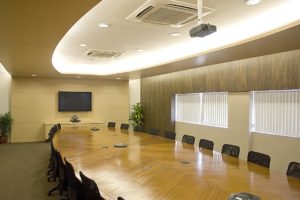 What is Variable Refrigerant Flow? This proven HVAC technology has been used for over three decades in Europe and Asia …and now gaining marketplace acceptance in North America. Because of its ability to respond to fluctuations in space load conditions, VRF excels at saving energy (and energy costs) during part-load system usage and has become an attractive alternative to traditional HVAC options.
What is Variable Refrigerant Flow? This proven HVAC technology has been used for over three decades in Europe and Asia …and now gaining marketplace acceptance in North America. Because of its ability to respond to fluctuations in space load conditions, VRF excels at saving energy (and energy costs) during part-load system usage and has become an attractive alternative to traditional HVAC options.
What is Variable Refrigerant Flow (VRF)?
As the name implies, Variable Refrigerant Flow (VRF) is a method of air conditioning/heating a space by moving variable amounts of refrigerant (as opposed to water or air), through a piping system sent to each zone independently that is to be cooled or heated. Think of it as a large-scale version of a ductless mini-split air conditioning system. Using sophisticated control technologies, VRF systems are in tune with diverse and changing space conditioning loads in a building, thereby increasing energy savings.
VRF Key Components
There are two types of VRF systems: Heat Pump and Heat Pump with Heat Recovery.
Heat Pump
Similar to a standard heat pump, this outdoor unit is either set in the heating or cooling mode and all indoor units operate in that same (heating or cooling) mode.
Heat Pump with Heat Recovery Unit (HRU)
The heat recovery heat pump system, on the other hand, allows for simultaneous heating and cooling of several individual zones that are connected on the same refrigerant loop. This energy efficient method allows for diversification in the overall cooling and/or heating load. With individual controls like these, you can have the heat on at the same time the air conditioning is one. Each room can do its own thing.
Variable Refrigerant Flow Ideal for Retrofit Applications
One of the biggest benefits of VRF is the system’s energy efficiency. By reducing the amount of duct needed to condition a space, or even eliminating in some cases, energy losses due to static pressure are greatly reduced. According to ASHRAE, these duct losses due to friction account for an estimated 10% to 20% loss of total airflow in a ducted system.
Although VRF isn’t suitable for all applications, they are widely used in commercial construction renovations because of their flexibility and elimination of big ductwork which saves space. In addition, the precise zoned control features aid to the achievement of major certifications such as LEED, Green Globes and ENERGY STAR which makes it appealing to multi-story office buildings, hotels, restaurants, banks, hospitals, shopping malls and universities.
KMB Engineering Excellence
VRF systems aren’t an “off-the-shelf” solution, they require the expertise of a facilities and energy engineer who will carefully evaluate your load profile for the building so that each outdoor section is sized specifically based on the peak load of all the indoor sections at any given time. The experts at KMB will use our extensive engineering experience to design the appropriate modifications to existing systems or add additional systems that will reduce energy usage and costs for your project.
Contact KMB today to learn how we can put our MEP Engineering expertise to work on your next project. KMB Design Group: Providing success through Engineering excellence, teamwork and integrity.